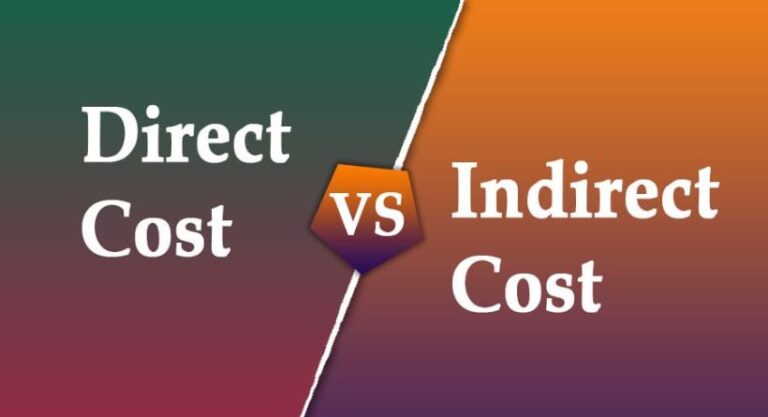Understanding Direct Costs vs Indirect Costs is important for properly tracking your business expenses.
- Understanding the distinction between direct and indirect expenses is essential when setting the price for your goods or services.
- Indirect costs are those associated with sustaining and operating a business, while direct costs are those that can be linked to a particular product.
- If you can categorise your expenses properly, you will as a company owner have a deeper grasp of how to determine price.
- Small company entrepreneurs and startup founders who wish to better understand their expenses should read this article.
When determining the price of your goods or services, you as the owner of a startup or small company should be aware of the difference between direct and indirect expenses. You may set prices that are both competitive and accurate when you are aware of the actual expenses associated with manufacturing and delivering your clients with your products or services. Additionally, since certain expenses are tax deductible, keeping track of both direct and indirect expenditures can help you take the most deductions possible. Finally, there are a number of regulations regarding the kinds of indirect expenditures and the maximum amount you may deduct if you ever apply for and obtain a grant.
What do direct expenses entail?
Direct costs are costing a business can quickly link to a particular “cost item,” which might be a project, department, or product. This group might comprise tools, machinery, and raw materials. As long as the labor is unique to the item, division, or project, it may also involve labor.
For instance, the labor for a project is a direct expense if a person is employed to work on it entirely or for a certain number of hours. Direct expenditures are incurred when your business creates software and requires certain resources, such as acquired frameworks or development tools.
examples of upfront expenses
The bulk of direct expenditures are related to labor and raw materials. For instance, an appliance manufacturer needs steel, electrical parts, and other raw resources to construct a product. Depending on when your organization consumes materials in production, first-in, first-out (also referred to as FIFO and LIFO) and last-in, first-out (also referred to as LIFO) are two typical methods of monitoring these expenditures. If the price of your resource’s changes throughout manufacturing, LIFO may be useful.
Most direct expenses are often variable. For instance, the hardware for smartphones is a direct variable cost since the quantity requested determines how many are produced. Direct labor expenditures, which often stay consistent throughout the year, are a significant exception. Usually, the number of things produced has little direct impact on how much a person is paid.
What do indirect expenses entail?
The costs associated with sustaining and operating a business are included in indirect costs, which go beyond the expenditures you spend while manufacturing a product. After direct expenditures have been calculated, the remaining expenses are these overhead expenses.
Indirect costs include expenses for things like computers, power, and rent that are required for a business’s daily operations. Although these things help the business as a whole, they are not specifically attributed to the development of any one service.
Illustration of indirect costs
Supplies, utilities, office equipment rental, desktop computers, and mobile phones are examples of indirect expenses. Indirect costs may be either constant or variable, much as direct expenses. Rent is an example of a fixed indirect cost; variable indirect costs include changeable expenditures like electricity and gas.
Additionally, “fringe perks” like paid time off and the use of a company automobile are often seen as indirect expenditures by for-profit companies.
What distinguishes direct expenses from indirect costs?
A quick tip for determining whether payments are direct or indirect expenses is as follows: Indirect costs are outlays that are unrelated to a specific product, while direct costs include all expenditures related to designing, manufacturing, and marketing a product or service.
Explicit costs
- industrial supplies
- Equipment
- components, raw
- Labor charges
- various manufacturing expenses
indirect expenses
- Services Office equipment
- Office equipment
- marketing initiatives
- Payroll and accounting software
- Employee small business insurance requirements /138-determining-small-business-insurance-needs.html
The significance of understanding the distinction
Grasp the differences between the various expenses can help you develop more competitive pricing for your product or service by giving you a better understanding of your costs. Additionally, keeping track of direct and indirect expenditures can help you better understand your accounting and prepare for the future.
When paying your taxes, you also need to understand the distinction between direct and indirect charges. Tax deductions apply to certain direct and indirect expenses. Repairs to your company’s machinery, such your manufacturing line, are an example of direct expenses that may be written off on your taxes. Rent, electricity, and certain insurance charges may all be deducted from taxes as indirect costs. But each company’s circumstances are unique. To find out which expenses are allowable, go to your accountant or bookkeeper.
How financing for your small company is impacted by direct and indirect expenses
Finding direct and indirect expenses is especially crucial when dealing with government grants or other external funding sources. Grant regulations are often rigorous regarding what counts as a direct cost or an indirect cost, and they could allot a certain amount of cash to each category.
Frequently, financing for a particular project will cover the majority of the direct expenditures. You could be allowed to provide justification for why indirect expenses need to be covered as well by certain government organizations, but the choice to do so is ultimately up to them.
When a business receives government money, the funding organization could also have a number of tight requirements in place regulating the maximum rate of indirect costs and what kinds of charges are considered indirect costs.
Dividing up direct and indirect expenses to ensure accurate accounting
Proper accounting must take into consideration how direct and indirect expenses vary from one another. Small companies may better understand their cash flow, correctly price their products, and maximize their tax deductions by tracking each sort of expense individually. If you need help separating out your company’s costs, speak with a qualified accountant or choose accounting software that may help your company.







